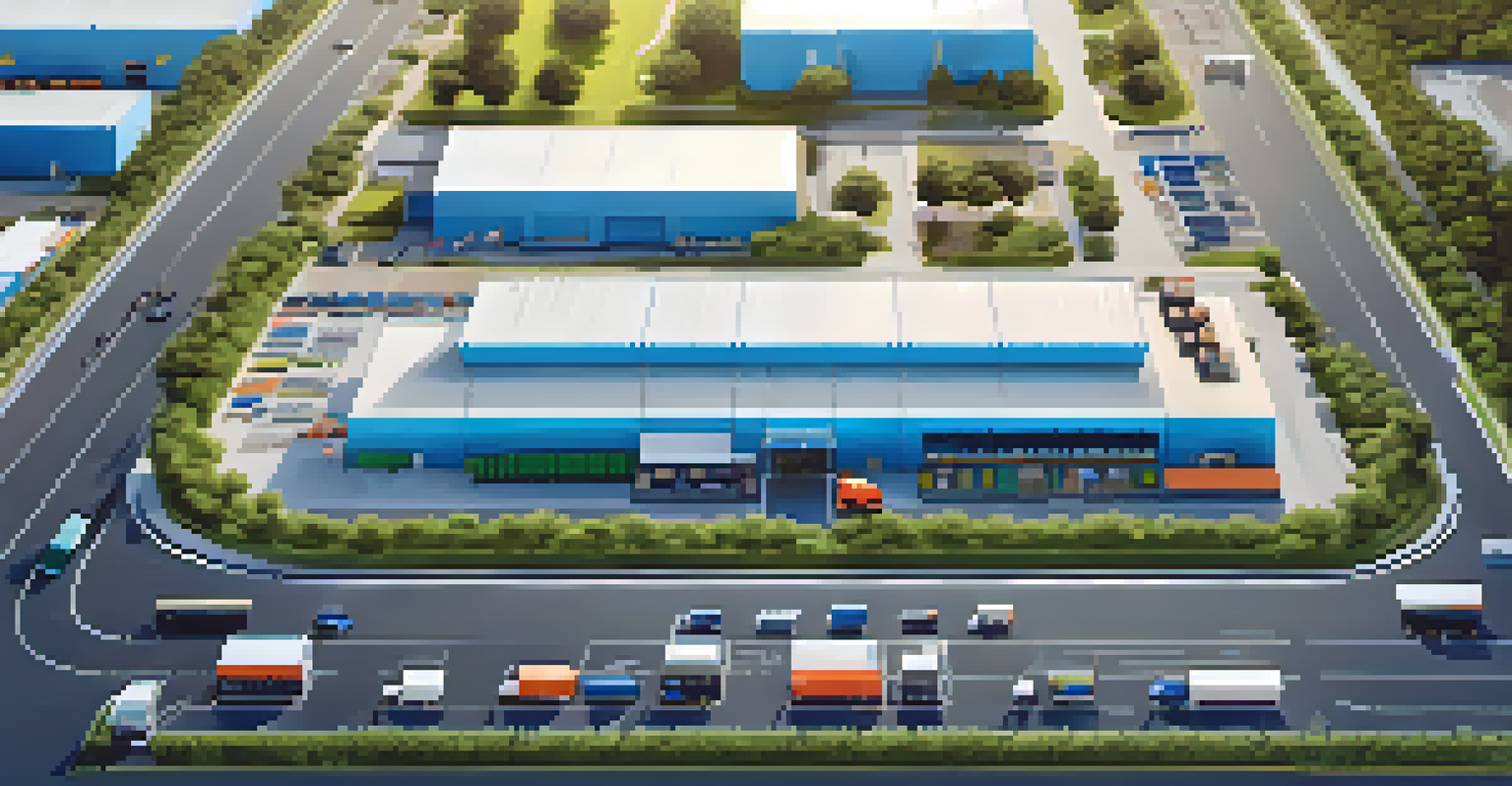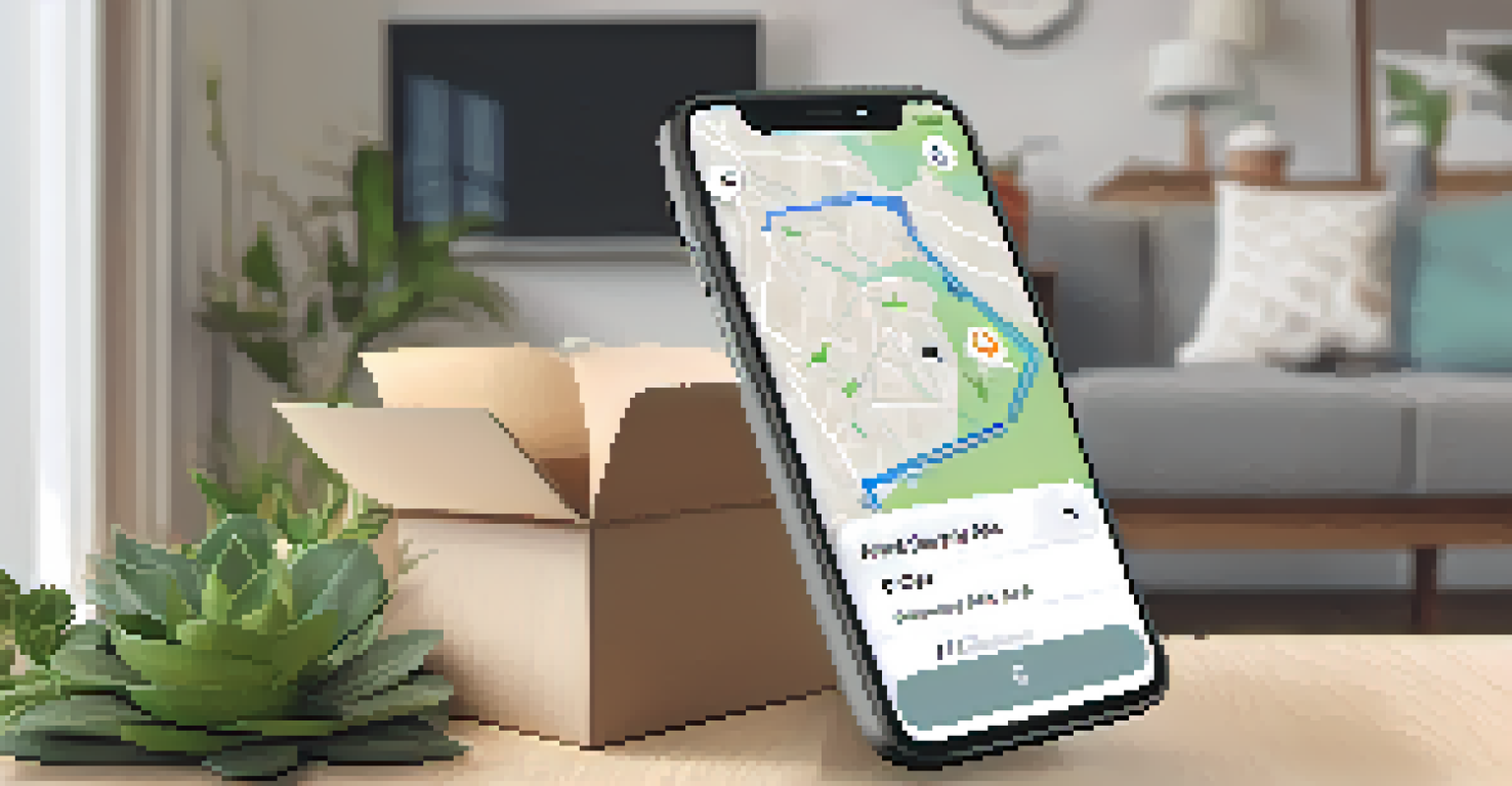Enhancing Last-Mile Delivery Through Digital Supply Chain Tech

Understanding Last-Mile Delivery and Its Challenges
Last-mile delivery refers to the final step of the delivery process, where goods are transported from a distribution hub to the final destination. This phase is crucial because it directly impacts customer satisfaction. However, it often presents significant challenges, including traffic congestion, delivery windows, and varying customer availability.
The customer experience is the next competitive battleground.
Imagine ordering a pizza during peak hours; it’s delicious but can take longer than expected to arrive. Similarly, last-mile delivery faces issues like route optimization and delivery speed, which can frustrate customers and affect brand loyalty. Each delay can lead to a ripple effect, impacting supply chain efficiency.
To tackle these challenges, businesses must embrace innovative solutions that streamline the delivery process and enhance the customer experience. By leveraging technology, companies can turn obstacles into opportunities for improvement.
The Role of Digital Supply Chain Technology
Digital supply chain technology encompasses a variety of tools and systems designed to improve the flow of goods and information. This includes software for tracking shipments, managing inventories, and optimizing routes. By integrating these technologies, businesses can gain real-time visibility into their supply chain operations.

For instance, GPS tracking allows companies to monitor delivery vehicles and adjust routes based on traffic conditions. This not only saves time but also reduces fuel costs, which is beneficial for both the environment and the bottom line. It's like having a navigation app that constantly updates your route to avoid traffic jams.
Challenges of Last-Mile Delivery
Last-mile delivery faces significant challenges such as traffic congestion, varying customer availability, and route optimization, which can impact customer satisfaction.
Moreover, digital tools facilitate better communication between suppliers, distributors, and customers. This transparency fosters collaboration and helps resolve issues quickly, ultimately leading to a more efficient last-mile delivery process.
Implementing Route Optimization Software
Route optimization software is designed to determine the most efficient paths for delivery vehicles. By analyzing factors like traffic patterns, delivery locations, and time constraints, this software can significantly reduce travel time and costs. It’s akin to using a smart GPS that finds the quickest way to your destination.
Sustainability is no longer about doing less harm. It's about doing more good.
For example, companies like UPS and FedEx have adopted advanced algorithms to streamline their routes, which has resulted in substantial savings and improved delivery times. These technologies can dynamically adjust routes in real-time, ensuring drivers always take the most efficient path.
Ultimately, implementing route optimization not only enhances operational efficiency but also increases customer satisfaction, as deliveries arrive faster and more reliably.
Leveraging Data Analytics for Better Decision-Making
Data analytics plays a crucial role in enhancing last-mile delivery by offering insights into customer behavior, delivery patterns, and operational performance. By analyzing historical data, companies can identify trends and make informed decisions that improve efficiency. Think of it like having a crystal ball that reveals patterns and helps you plan better.
For instance, analytics can reveal peak delivery times, allowing businesses to allocate resources more effectively. This proactive approach ensures that deliveries are made during optimal times, reducing the chances of delays. It’s about working smarter, not harder.
Role of Technology in Delivery
Digital supply chain technologies like route optimization and data analytics enhance efficiency and improve customer experience during last-mile delivery.
Moreover, using data analytics can help businesses anticipate customer needs and enhance their service offerings. By understanding customer preferences, companies can tailor their delivery options, making the process more user-friendly and appealing.
Enhancing Customer Experience with Technology
In the age of e-commerce, customer experience is paramount. Technology plays a vital role in improving this experience during the last-mile delivery phase. Features like real-time tracking updates and flexible delivery windows empower customers, giving them control over their purchases.
For example, many companies now offer mobile apps that allow customers to track their orders and communicate directly with delivery personnel. This level of transparency builds trust and enhances satisfaction, as customers feel informed and valued throughout the delivery process.
Additionally, personalized notifications and delivery options, such as same-day delivery or pick-up points, cater to individual customer preferences. This customization is key to fostering loyalty and encouraging repeat business.
The Impact of Automation on Last-Mile Delivery
Automation technologies, such as drones and autonomous delivery vehicles, are revolutionizing the last-mile delivery landscape. These innovations promise to reduce delivery times and lower operational costs. Imagine a drone zipping through the sky, delivering your package in minutes instead of hours.
Companies like Amazon are already experimenting with drone delivery services, showcasing the potential for faster and more efficient deliveries. Autonomous vehicles can also navigate traffic without human intervention, optimizing routes and reducing delays.
Sustainability in Delivery Practices
Emphasizing sustainable practices, such as using electric vehicles and eco-friendly packaging, helps reduce environmental impact while appealing to eco-conscious consumers.
While automation offers exciting possibilities, it’s essential to balance technology with human oversight. This ensures safety and reliability in the delivery process while maximizing the benefits of automation.
Sustainability in Last-Mile Delivery Solutions
As environmental concerns grow, businesses are increasingly focusing on sustainable last-mile delivery practices. Digital supply chain technology can help reduce the carbon footprint of delivery operations. For example, electric delivery vehicles and optimized routes can significantly lower greenhouse gas emissions.
Additionally, implementing eco-friendly packaging and utilizing local distribution centers can minimize waste and resource consumption. It’s like choosing to ride a bike instead of a car; the difference may seem small, but it adds up to a significant impact on the environment.

By adopting sustainable practices, companies not only contribute to a healthier planet but also appeal to eco-conscious consumers, enhancing their brand image and fostering loyalty in today’s market.